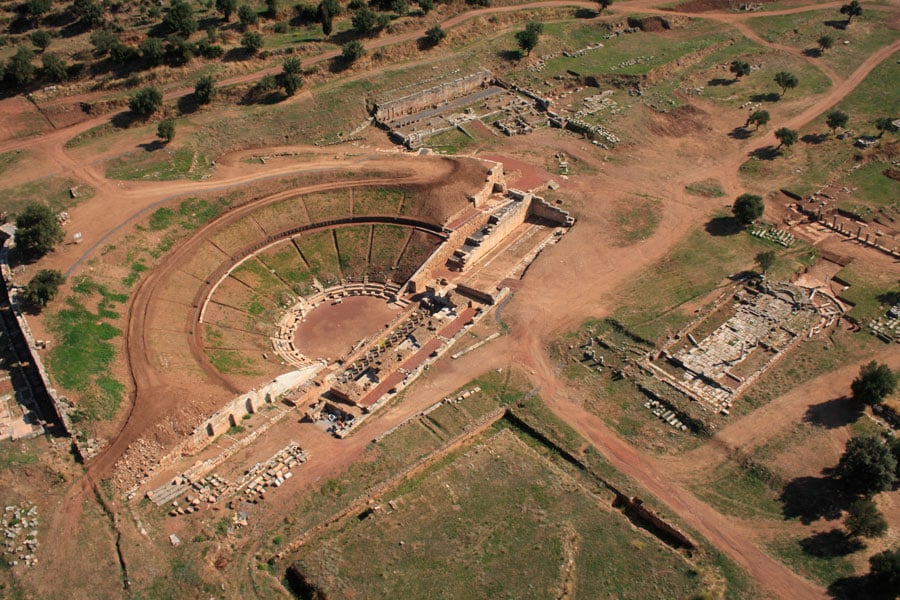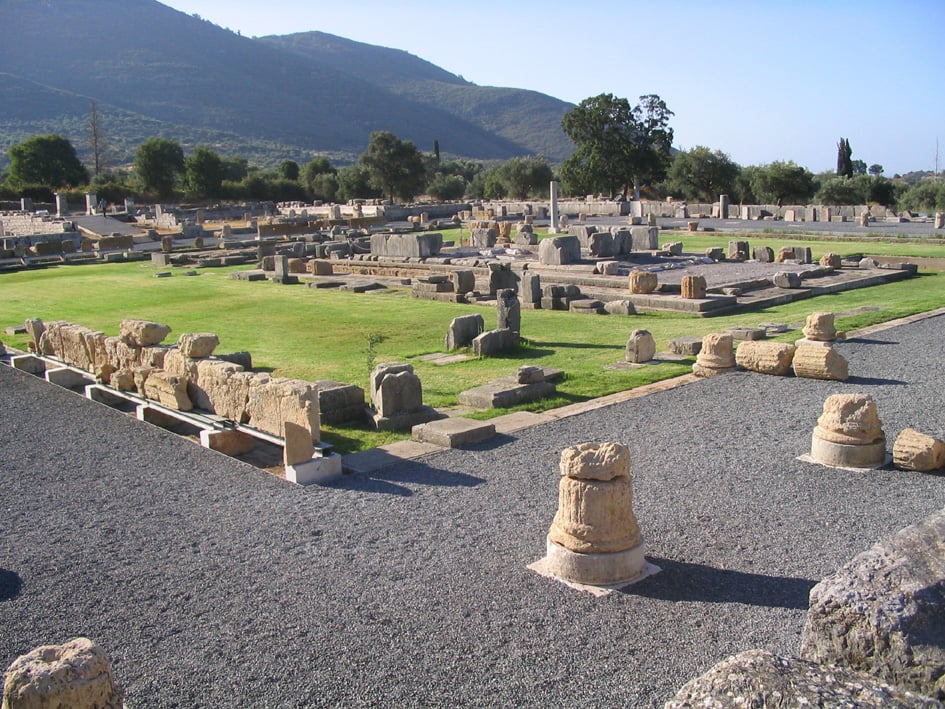
Ancient Messene the large classical city-state in Peloponnese will get a new museum that will showcase a curated selection of 19,000 movable artifacts discovered over the last decades.
The new museum will be positioned between the old museum and the archaeological site of Ancient Messene, covering a total area of 2,400 sq.m. It will boast 1,000 sq.m. of exhibition space, including 900 sq.m. for permanent displays and 100 sq.m. for temporary exhibitions, alleviating the archaeological site from dispersed artifacts.
According to the preliminary architectural study, the museum will focus on the Asclepeion, where the local sculptor Damofontas worked, and the sanctuary of the goddess Messana in the Agora of Ancient Messene.

Ancient Messene “is one of the most important cities of antiquity”
UNESCO says that Ancient Messene “is one of the most important cities of antiquity and one which still has a great deal to offer. It boasts not only religious and public buildings but also imposing fortifications, houses and funerary monuments.”
The city has the rare advantage of not having been destroyed or covered by later settlements and of being situated in an untouched Mediterranean natural environment par excellence.
“This landscape combines the mountainous majesty of Delphi and the lowland riverine tranquillity of Olympia, with the looming bare limestone mass of Mt Ithome and its acropolis, and the low, fertile valley around the ancient city,” UNESCO adds.
The conquest of fertile Messene by the Spartans formed the cornerstone of Spartan power, and its 400-year occupation allowed Sparta to evolve into the military superpower which, together with its rival Athens, was to shape the history of Classical Greece.

Foundation of Messene marked the end of Spartan dominion
The foundation of the city of Messene marked the end of Spartan dominion. The city became the political, economic, social, religious and artistic centre of the free Messenians, who in the previous centuries had been reduced to the status of helots or perioikoi under the Spartan yoke.
The archaeological site and monuments of Ancient Messene constitute an exceptional testimony to the urban environment and living conditions of an ancient Greek city, preserving all those elements that make up the ancient Greek way of life in an ancient Greek city (secular, religious, political/administrative, residential, funerary).
The archaeological site of ancient Messene lies in a fertile valley approximately in the center of the Regional Unit of Messenia.
The city of Ancient Messene was founded in 369 BC by the Theban general Epaminondas (after the Battle of Leuctra in 371 BC, which resulted in Spartan defeat and the establishment of the Theban Hegemony). It became the capital of the free Messenian state following a long period (about four centuries) of occupation of the Messenian territory by the Spartans.
Strong fortification walls with towers and gates
Strong fortification walls with towers and gates are preserved along a course of 9.5 km, surrounding the city and Mt Ithome, where the sanctuaries of Zeus Ithomatas (9th-8th c. BC), Artemis Limnatis and Eileithyia (3rd-2nd c. BC) stood.
On the site of the city are preserved public and religious buildings, many of them reconstructed to a large degree. The extensive complex of the Asklepieion (3rd-2nd c. BC) stands out, with the Doric sanctuary of Asklepios, which is surrounded by stoai of buildings of a religious and secular-funerary nature.
A series of reconstructed monumental structures, such as the Ecclesiasterion-Odeion, the Bouleuterion, the Theatre, the Arsinoe Fountain, the Agora and the Stadium, as well as an extensive group of funerary monuments and heroons, including the reconstructed monumental Saithid Mausoleum (1st c. BC-1st c. AD), bear witness to the size of the city and its political, religious, economic and social importance.
Particularly luxurious Roman villas with mosaic floors complete the urban plan, while a multitude of inscriptions sheds light on hitherto unknown facets of the historical events that took place during the period of the Alexander’s Successors, the Macedonian Kingdom, the Achaean League, the Koinon of the Arcadians and the Aetolians, and Roman interference in Greek affairs.
A plethora of statues, vessels and other moveable finds is on display at the nearby Archaeological Museum, testifying to the thriving society of Messene.
Related: Greek Archaeologist Petros Themelis Revived Ancient Messene